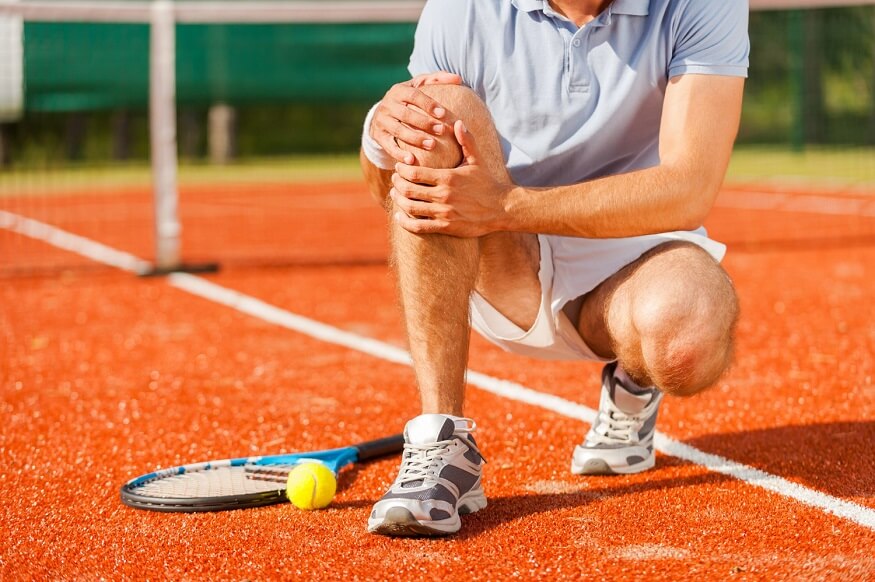Repetitive Strain Injuries (RSIs) in sports refer to a category of injuries that occur when too much stress is placed on one part of the body, resulting in inflammation, muscle strain, or tissue damage. This stress usually stems from repetitive movements performed over an extended period.
Also Read: Importance of Sports in a Student’s Life
Repetitive Strain Injuries in Sports: Symptoms
Repetitive strain injuries also known as overuse injuries, represent a wide array of conditions common in the world of sports. These injuries typically develop from repetitive tasks, forceful exertions, vibrations, mechanical compression, or sustained or awkward positions.
RSIs are especially prevalent in athletes involved in sports that require the same movements to be performed over and over again. They affect a variety of body parts, but most commonly, they occur in the upper body, impacting the hands, wrists, elbows, and shoulders.
The initial symptoms of RSIs may appear subtle but can progressively worsen if not addressed promptly. The individual may start to experience discomfort in the affected area during or after participation in the sporting activity. The discomfort can escalate into pain, which might be sharp, throbbing, or a dull ache.
A significant symptom of RSIs is reduced joint mobility or stiffness, especially in the morning. Athletes might also experience muscle weakness, making it difficult for them to perform tasks that were previously simple. This could affect their performance in their sport of choice.
Tingling, numbness, or a sensation similar to ‘pins and needles’ in the affected body part is also common, typically indicating nerve involvement. Sometimes, these sensations can extend beyond the primary site of injury.
Swelling or inflammation around the injured area is a further symptom to be aware of, as is a visible loss of muscle bulk or strength over time. Lastly, one might observe that their coordination or dexterity is compromised, making it challenging to carry out even everyday tasks.
Also Read: 10 Safety Rules at School You Must Teach Your Children
Repetitive Strain Injuries in Sports: Examples
Repetitive Strain Injuries are common in various sports due to the constant, repeated motions athletes must perform. Here are a few examples of sports-specific RSIs:
Tennis Elbow (Lateral Epicondylitis): This condition often affects tennis players due to the repetitive motion of swinging the racquet. The extensor tendon attached to the outer part of the elbow becomes inflamed, leading to pain and tenderness.
Golfer’s Elbow (Medial Epicondylitis): Similar to tennis elbow, but affects the inside of the elbow. It’s common in golfers due to the repetitive motion of swinging the golf club, but can occur in any sport that involves throwing or swinging.
Jumper’s Knee (Patellar Tendinitis): This injury, common among basketball and volleyball players, is due to repeated jumping and landing, causing inflammation of the tendon connecting the kneecap to the shin bone.
Swimmer’s Shoulder: As the name suggests, this RSI is common among swimmers, caused by the overuse of the shoulder muscles during swimming strokes. This condition results in shoulder pain and reduced mobility.
Runner’s Knee (Patellofemoral Pain Syndrome): This condition often affects long-distance runners. It’s characterised by pain around or behind the kneecap due to repeated stress on the knee joint.
Shin Splints: Often occurring in runners or dancers, shin splints are characterised by pain along the shin bone (tibia). They are typically caused by repeated impact on the lower leg.
Achilles Tendinitis: This is an overuse injury of the Achilles tendon, the band of tissue that connects calf muscles at the back of the lower leg to your heel bone. It’s common in runners who have suddenly increased the intensity or duration of their runs.
Pitcher’s Shoulder (Rotator Cuff Tendinitis): This condition is often found in athletes who participate in sports that require overhead movements, such as baseball, tennis, and weightlifting. It’s characterised by inflammation of the tendons in the shoulder.
These are just a few examples of the many types of RSIs that can affect athletes. The key to managing these injuries is early recognition, appropriate rest, effective treatment, and adopting preventative measures.
Also Read: Playground Safety for Children – Rules and Precautions
Repetitive Strain Injuries in Sports: Treatment
Managing and treating RSIs effectively is crucial to reduce symptoms, facilitate healing, and prevent further injury. The treatment strategies often vary based on the severity and type of the injury, and the specific demands of the sport in question.
One of the most universally recommended treatments is the RICE protocol, which stands for Rest, Ice, Compression, and Elevation. Rest allows the affected area to heal, Ice can reduce inflammation and numb pain, Compression can help minimise swelling, and Elevation can improve blood flow and help reduce swelling.
Another initial approach can be over-the-counter pain relievers and non-steroidal anti-inflammatory drugs (NSAIDs) such as ibuprofen. They help to manage pain and reduce inflammation. However, long-term use should be avoided as it can have side effects.
Physical therapy or physiotherapy is another common form of treatment. It often involves exercises that strengthen muscles, improve flexibility, and promote better biomechanics. Exercises are usually tailored to the athlete’s needs and the requirements of their sport. Physiotherapy can also involve massage, heat or cold therapy, electrical stimulation, and ultrasound.
Ergonomic assessment can be beneficial, particularly for athletes involved in sports requiring repetitive actions. An occupational therapist or a qualified coach can provide advice on modifying technique or using equipment correctly to prevent further injury.
In extreme circumstances, a doctor may advise corticosteroid injections or even surgery. However, if other treatments are unsuccessful for the injury, these are typically the last resort solutions.
Athletes must learn about injury prevention methods and apply them into their routine in addition to receiving these treatments. This can entail starting out right, building breaks into your workout plans, doing cross-training to balance your muscle groups, and leading an overall healthy lifestyle.
Athletes can avoid repetitive strain injuries and continue to excel in their chosen activities by being aware of them, receiving the appropriate care, and taking preventative steps.
Also Read: How a five-point safety harness keeps your child safe
Euroschool takes care of students who participate in sports in many ways. We create a safe and healthy environment for our athletes to participate in sports.










